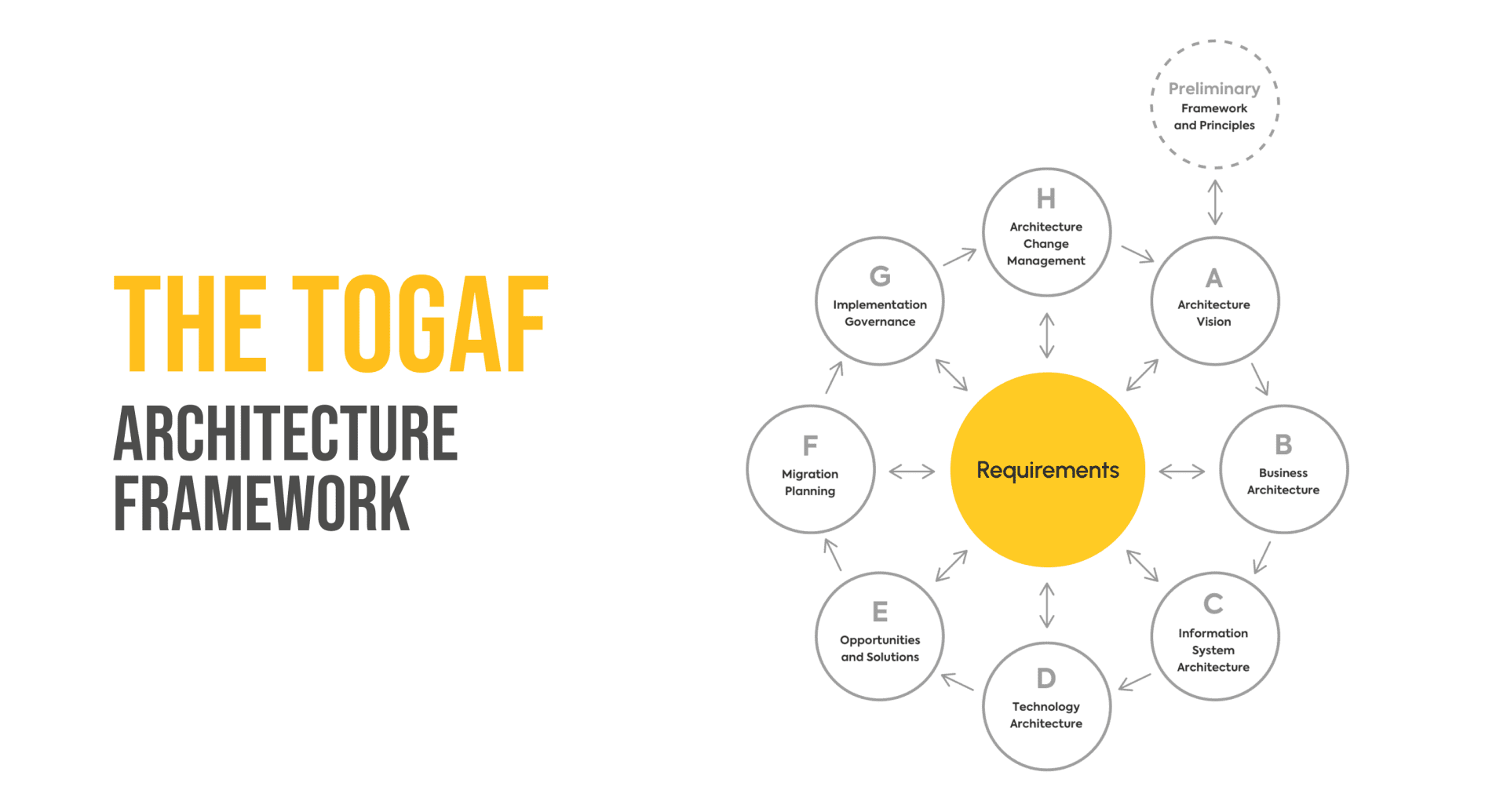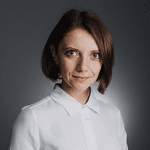Being adept at where business meets technology is like having the keys to a treasure chest of success. The fusion of smart business strategy with cutting-edge IT technologies is the secret sauce that propels enterprises ahead of the curve.
Imagine having the right tools in your arsenal to chart a course that aligns business goals seamlessly with technology. This is precisely what we unravel in the latest episode of the CLARITY Quote-to-Cash podcast. Join hosts Karyna Mihalevich and René de Daniel as they explore the SAP Enterprise Architecture Framework, a guiding compass for businesses embracing digital transformation.
Our guest René de Daniel, Principal Enterprise Architect at SAP in Switzerland and the host of the podcast Karyna Mihalevich, CPQ Functional Lead at CLARITY.
Content
Before we dive deep into the subject, please meet our podcast’s hosts: Karyna Mihalevich, CPQ Functional Lead at CLARITY, and René de Daniel, a Principal Enterprise Architect at SAP in Switzerland. He specializes in guiding transformation programs within the pharmaceutical industry and serves as an enterprise architect. René not only provides enterprise architecture mentoring services but also offers transitional management for EA teams to SAP customers. Additionally, he co-authors and delivers SAP Intelligent Enterprise Architecture Training (IEA10) to customers, partners, and within SAP.
The Four Pillars of SAP Enterprise Architecture Framework
The SAP Enterprise Architecture Framework takes the lead in understanding how business strategy is interconnected with tech advancements and how IT can pave the way for notable shifts in company revenues. René breaks down the framework’s core.
- Methodology: The SAP Enterprise Architecture Framework is underpinned by a robust methodology, drawing inspiration from industry standards like TOGAF. This methodology is versatile, catering to both small-scale engagements and large transformation programs.
- Reference Content: The reference content comprises two crucial components. First, the business reference architecture focuses on capabilities and processes, providing a solution-agnostic space where organizations can align with their strategies. Second, the solution reference architecture establishes the link between processes and capabilities to the SAP solution portfolio.
- Tools: Notable tools include the Signavio Process Explorer, which provides access to reference content, and others facilitating service lookup and technical information retrieval.
- Service Portfolio: This component extends beyond delivering services to play a crucial role in shaping roadmaps, defining target architectures, and conducting assessments across the architectural landscape.

The Role of Enterprise Architecture Tooling in SAP Frameworks
Enterprise Architecture Tooling emerges as a pivotal player within SAP Frameworks.
Karyna and René highlight the key benefits of tooling for organizations.
Signavio Process Explorer: René emphasizes Signavio Process Explorer as a primary tool within SAP’s arsenal. Accessible to anyone with an S-user, this tool allows free exploration of the reference architecture’s content. The Process Explorer becomes a catalyst for expediting architecture activities, especially for companies transitioning to business capabilities.
Speeding Up Architecture Activities: Leveraging tools like Signavio Process Explorer accelerates architecture activities. Companies utilizing process models can seamlessly transition to business capabilities, tapping into detailed capabilities to kickstart meaningful interactions with stakeholders.
Repository Interconnectedness: The tools come with a repository where all objects are interconnected. This interconnectedness allows users to derive a set of solutions supporting specific processes or capabilities. It facilitates the definition of a target architecture, aligning with the SAP perspective and proposing tailored solutions.
Insights into Reference Architecture: Tools provide comprehensive insights into the reference architecture, offering a detailed view of how it aligns with the specific needs and environment of an organization. Whether in a hybrid environment or a cloud deployment, organizations can choose models that best suit their requirements.
Navigating SAP’s Service Portfolio

In exploring enterprise architecture, our hosts shed light on SAP’s Service Portfolio – a collection of consulting services that covers the entire architecture life cycle.
- Assessment of Strategy: The journey commences with a strategic assessment, dissecting and translating overarching strategies into actionable plans.
- Business Architecture: Here, the focus is on defining a business capability map. Taking the example of the lead-to-cash perspective, the transition from processes to capabilities becomes a crucial step, aligning language and engagement with stakeholders.
- Multi-application Architecture: Delving into the target application architecture, the service aims to decipher the current as-is architecture, crafting a roadmap that aligns with business priorities over time.
- Architecture Governance: This service addresses the internal mechanisms of architecture governance. It involves establishing structures like an architecture review board to evaluate and approve solution proposals, ensuring a streamlined implementation process.
- Specialized Assessments: Tailored services cater to specific needs, such as assessments of current landscapes, particularly in the context of intelligent technologies. These assessments identify opportunities for improvement, including levels of automation.
The richness of SAP’s Service Portfolio lies in its modular construction, allowing organizations to tailor a combination of services to meet their unique needs. This adaptability ensures that businesses can craft a bespoke service package aligned with their specific goals and challenges.
EA Framework: Training & Practical Insights
In the complex field of enterprise architecture, Karyna and René discuss opportunities for further exploration through training and practical insights.
“At the core of intelligent technologies lies a focus not solely on the technology itself but, ultimately, on enhancing business outcomes. Our approach involves a thorough assessment of business priorities and drivers, ensuring that the adoption of technology is purposeful and aligned with improving specific business situations, such as enhancing automation and digitization in key areas,” says René.
René presents the Intelligent Enterprise Architecture Foundation Training, an immersive five-day program designed to provide hands-on experience along with comprehensive theoretical knowledge. This intensive course covers theoretical knowledge about the methodology, reference architecture, tools, and services, and also incorporates hands-on activities. Participants engage in a full enterprise architecture cycle, from assessing business strategy to crafting implementation roadmaps.
For those who want to go really deep, René has crafted a comprehensive blog around the enterprise architecture framework, offering detailed insights, overviews, and visuals. This blog acts as a valuable resource for those eager to delve into the framework’s nuances.
René also clarifies how the framework acts as a guiding force, ensuring the alignment of technology initiatives with business objectives. The process includes:
- Business Perspective Assessment: Prioritizing business drivers and translating them into business capabilities.
- Mapping Lack of Automation: Identifying areas with manual activities or spaces where differentiation through intelligent technologies is sought.
- Technology Exploration: Delving into technology aspects to understand the possibilities for improvement. This includes exploring specific use cases and leveraging solutions offered by platforms like S4HANA.
Transforming Business Models with SAP EA Framework

In the interplay between technology and business strategy, the SAP Enterprise Architecture Framework emerges as a catalyst for profound change and business process optimization. Let’s take a look at the six main areas of the strategic impact of the framework.
Business and IT Alignment: René highlights a key achievement of the framework – enhancing business technology alignment. The formalization of enterprise architecture activities is a cornerstone. The unique blend of methodology and reference architecture accelerates activities, providing curated content endorsed by SAP’s vision for the future.
Investment Security and Up-to-Date Solutions: The framework offers a level of investment security by ensuring architects access current and growing content. Product teams continually contribute, guaranteeing relevance and preventing outdated solutions.
Business Architecture and New Business Models: The framework’s application extends to traditional architecture engagements, with a pivotal focus on business architecture and emerging business models. Key considerations include customer engagement, shifting from products to services or solutions, partner integration, financial perspectives, and sustainability aspects.
Translating Insights into Target Architecture: Leveraging capabilities or processes, architects use the reference architecture to craft a future-proof landscape aligned with the envisioned business model.
Strategic Roadmap for Implementation: Business priorities guide the identification of crucial starting points, emphasizing quick wins to demonstrate value promptly. This holistic approach ensures a phased implementation that aligns with evolving business needs.
An Exemplar Use Case: The framework facilitates a systematic approach to embrace new business models, providing a robust IT technology implementation strategy.
Who Will Benefit from Using SAP’s EA Framework?
René emphasizes that anyone occupying the role of an enterprise architect is poised to derive immense value from the framework. This includes both external consultants, serving as SAP partners, and internal teams within customer organizations. The overarching goal is to foster a common language and a unified approach across the industry, streamlining interactions between consultants, customers, and SAP itself.
René also mentions that SAP now offers an Enterprise Architecture Certification specifically tailored for enterprise architects. This certification goes beyond traditional knowledge tests and includes practical experience assessments. The Enterprise Architecture Certification incorporates scenarios that challenge architects to apply their knowledge in nuanced, real-world situations.
Those intrigued by the prospect of becoming a certified enterprise architect can find the link to the certification program here. René encourages exploration and emphasizes the value this certification adds to the skill set of enterprise architects.
The Bottom Line
So, to wrap up, SAP’s Enterprise Architecture Framework serves as a helpful guide for various users, from consultants to internal teams who go the way of digital transformation and understand the critical aspect of business technology alignment. Whether you’re a seasoned consultant, an internal team within a customer organization, or an aspiring enterprise architect, SAP’s framework offers a unified language and approach.
The newly introduced certification, emphasizing practical scenarios, adds a layer of experiential depth for architects, fostering a community of skilled professionals. As the framework continues to evolve, it not only aligns business strategies with technological solutions but also sets a standard for collaboration and excellence in the ever-evolving field of enterprise architecture.
